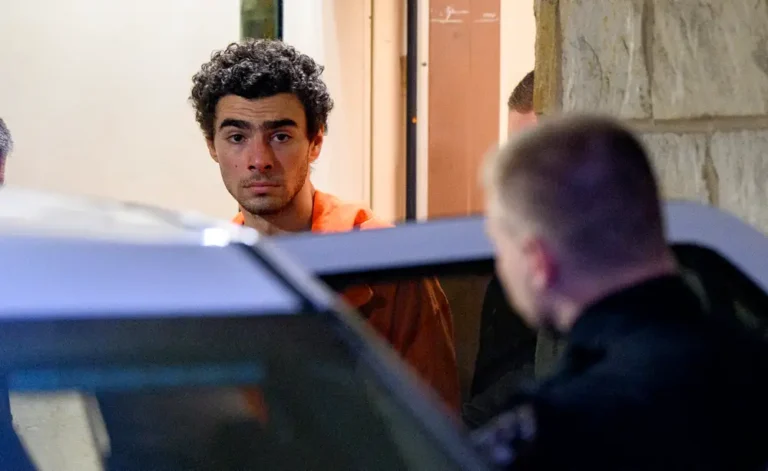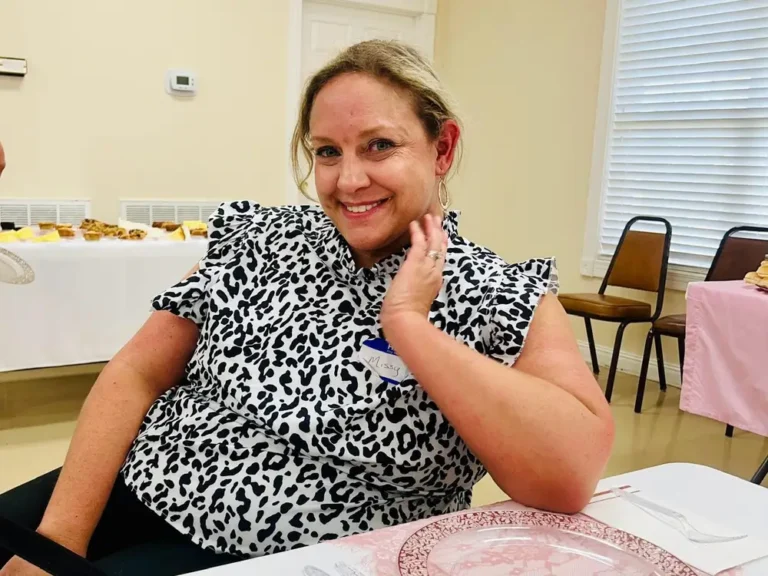Officials agree: Use settlement funds to curb youth addiction. But the ‘how’ gets hairy

When three teenagers died of fentanyl overdoses in Larimer County, Colorado, last year, it shocked the community and “flipped families upside down,” according to Tom Gonzales, the county’s public health director.
Several schools began stocking naloxone, an opioid overdose reversal medication. Teens were trained to use it by community organizations. However, county and school officials desired to do more.
That’s when they turned to opioid settlement funds, which are funded by national agreements with health-care companies like Johnson & Johnson, AmerisourceBergen, and CVS, which have been accused of fueling the epidemic with prescription painkillers. Over the next 18 years, the companies will pay more than $50 billion to state and local governments.
A large portion of that money will go toward addiction treatment and efforts to reduce drug trafficking. However, some are turning to school-based prevention programs to reduce the likelihood of addiction before it begins. School districts that filed their own lawsuits that became part of the national settlements are receiving direct payments in some cases. In some cases, state or local governments set aside a portion of their budget for school-based initiatives.
Many parents, educators, and elected officials agree that investing in prevention is critical to combating rising rates of teen overdoses, depression, and suicidal ideation.
“We have to look at the root causes,” said Diana Fishbein, a senior scientist at the University of North Carolina-Chapel Hill and a leading expert on using prevention science to inform public policy. otherwise “we’re going to be chasing our tails forever.”
However, how to do so is fraught with peril and will put many parents and local officials to the test.
D.A.R.E., a Drug Abuse Resistance Education curriculum developed in the 1980s and taught in schools by police officers, was synonymous with addiction prevention for generations of Americans. It “dared” children to resist drugs, and it was used in conjunction with other popular campaigns at the time, such as “just say no” and a video of an egg in a frying pan with the narration, “This is your brain on drugs.”
However, decades of research revealed that those approaches were ineffective. Suburban students’ drug use increased after participating in the D.A.R.E. program in some cases.
In contrast, the most promising prevention programs, according to today’s leading experts, teach children how to manage their emotions, communicate with others, be resilient, and build healthy relationships. According to a federal analysis, they can provide long-term health benefits while also saving society $18 for every dollar invested. However, this method is less intuitive than simply saying “no.”
If you tell parents, “‘We’re going to protect your child from dying of fentanyl poisoning by teaching them social skills in third grade,’ they’re going to be angry at you,” said Linda Richter, research director at the nonprofit Partnership to End Addiction. It takes time to persuade them of the most effective approaches.
One of the reasons prevention experts are concerned is that well-known programs such as D.A.R.E. will be the go-to for elected officials and school administrators deciding how to spend opioid settlement funds. When KFF Health News and InvestigateTV looked for evidence of local prevention spending, they found examples in half a dozen states where governments have already allocated $120,000 of settlement money to D.A.R.E. programs. Since the 1980s, the curriculum has been revised, but the effects of those changes are still being studied.
Budgetary Decisions Reflect a Deeper Debate
According to researchers, investing in programs with uncertain outcomes when more effective alternatives exist could cost not only valuable resources but, ultimately, lives. Although $50 billion may appear to be a large sum, when compared to the toll of the epidemic, every penny must be spent wisely.
“There is a significant risk that these funds will be squandered,” said Nathaniel Riggs, executive director of the Colorado State University Prevention Research Center.
But he has reason to be optimistic. Larimer County officials awarded Riggs’ team $400,000 in opioid settlement funds to develop an evidence-based prevention program.
Riggs and his colleagues are developing school staff training and assisting in the implementation of the Blues Program, a widely acclaimed intervention for students at risk of depression. The program, which will begin in 10 middle and high schools this fall, teaches students about resilience and social support through six one-hour small group sessions. Multiple studies have shown that it reduces rates of depression and drug use among young people.
Natalie Lin, a senior at Fossil Ridge High School in Fort Collins, Colorado, is hopeful that the program will help her peers overcome the stigma associated with mental illness and addiction.
“Having it in school” keeps people from feeling “called out” for needing help, according to Lin, who keeps naloxone in her car in case of an overdose. “It’s just acknowledging that anyone here could be battling” dependency, and “if you are, that’s all right.”
Across the country, prevention investments range from modest to substantial. The state of Rhode Island is spending approximately $1.5 million in settlement funds to increase the number of student assistance counselors in middle and high schools. Moore County, North Carolina, is investing $50,000 in an at-risk youth mentoring program. Some communities are inviting guest speakers, and many are relying on D.A.R.E.
North Carolina’s New Hanover County and the city of Wilmington, which it encompasses, pooled $60,000 in settlement funds to train nearly 70 officers in the D.A.R.E. program, which they hope to launch in dozens of schools this fall.
County Commissioner Rob Zapple described it as part of a “multipronged approach” to demonstrating to young people that they can live productive lives without drugs. Officials are also allocating $25,000 of the settlement funds to public service announcements and $20,000 to other forms of outreach.
They acknowledged that there has been little research on the updated D.A.R.E. curriculum, but said the county views its investment as a pilot that will be closely monitored. “Instead of committing everything at once, we’re going to let the spending of the money grow with the success of the program,” Zapple stated.
Munster, Indiana, also decided to expand its D.A.R.E. program, allocating $6,000 annually — a small portion of its total settlement funds. For several years, Jasper County, Iowa, has spent $3,800 on materials for the program’s graduation ceremonies.
Officials in some places are open about not having enough money to do anything creative.
For example, Solon, Ohio, received $9,500 in settlement funds this year and anticipates receiving similar or smaller amounts in the future. “While the funding is welcome,” finance director Matt Rubino said in an email, it is “not material enough to be transformational” to the budget. He felt that directing it all toward the existing D.A.R.E. program made the most sense.
Scare tactics are no longer acceptable.
D.A.R.E. CEO and President Francisco Pegueros stated that while the program has been in place since the 1980s, “it’s really significantly different” today. In 2009, the curriculum was revised to shift away from scare tactics and lectures on specific drugs and toward decision-making skills. Officers receive extensive training, including an understanding of how children’s brains develop.
“Telling somebody a drug is harmful isn’t going to change their behaviors,” Pegueros stated. “You really need to deliver a curriculum that’s going to build those skills to help them change behaviors.”
With the rise of fentanyl and some state legislatures mandating drug education, interest in D.A.R.E. has grown in recent years, according to Pegueros. He believes it can be effective as part of a comprehensive, community-wide prevention strategy.
“You’re not going to find one curriculum, one program, one action that’s going to achieve the results you want,” he stated.
Still, he believes D.A.R.E. can be beneficial, citing a recent study that found the new curriculum had a “positive effect in terms of deterring the onset of alcohol use and vaping” among fifth graders.
Many public health experts, however, remain skeptical. They are concerned that the changes are only superficial. The few studies of D.A.R.E.’s new curriculum have been short-term, yielded mixed results, and in some cases had high dropout rates due to the covid-19 pandemic, raising concerns about how applicable the findings are to schools across the country. According to some law enforcement officials and advocates, even the revamped program is frequently taught alongside campaigns like “One Pill Can Kill,” which warns youth that their first experience with drugs can be fatal.
Kelli Caseman, executive director of Think Kids, a nonprofit that advocates for children’s health and well-being in West Virginia, believes such scare tactics are futile. “It’s not as if these kids are unsuspecting and have never seen the consequences of drug use before,” she stated.
West Virginia had the highest rate of children living with their own or a parent’s opioid addiction in the country in 2017.
“We need stronger communities that are willing to just give those kids more guidance and support than fear,” Caseman stated. “They’ve already got enough fear as it is.”
Some local governments are attempting to walk both paths.
Take, for example, Chautauqua County in western New York. Last September, the county and a local child-development collaborative spent $26,000 — including $5,000 from an opioid settlement — to bring former NBA player Chris Herren to speak about his past addictions to alcohol, heroin, and cocaine at several assemblies. Herren told over 1,500 students about his first beer at the age of 14, how addiction ended his career, and how he ended up on the streets before entering recovery.
Patrick Smeraldo, a physical education teacher and the head of the local collaborative that organized Herren’s visit, said the basketball player’s story struck a chord with his students, many of whom have addicted parents. “When he talks about selling his kid’s Xbox to get drugs, I think he’s touching on facts that they’ve had to go through,” said Smeraldo.
However, researchers and public health experts believe that a one-time speaker event has little long-term impact.
That is why, according to Steve Kilburn, who oversees Chautauqua County’s addiction-related grants, the county is also investing opioid settlement funds in several other initiatives. Prevention Works, a local nonprofit that teaches a nationally acclaimed “Too Good for Drugs” curriculum in 23 schools and runs a “Teen Intervene” program that provides one-on-one coaching and support to students found using drugs or carrying drug paraphernalia in school, will likely receive a six-figure sum.
According to Melanie Witkowski, executive director of Prevention Works, some students are afraid to come to school because their parents may overdose and no one will be there to revive them.
Smeraldo, the physical education teacher, intends to expand on Herren’s talk with an after-school program in which students will be able to discuss their mental health and turn interests like cooking into internships to help break the poverty cycle, which often contributes to addiction.
Herren is “the catalyst for getting the kid to services that exist in the county,” according to Smeraldo. It’s just the beginning, not the end.
Gray Media Group’s national investigative team, InvestigateTV, delivers innovative, original journalism from a dedicated investigative team and partners. InvestigateTV and its weekend and weekday programming can be found on AppleTV, Roku, and Amazon Fire, as well as at InvestigateTV.com and in Gray’s 113 broadcast markets and digital media properties.






